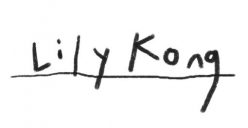Developing a visual language that communicates vulnerability and humour has been one of the main focuses in my practice. Previously, I realised that I have been working on similar content. This might be because the content often came from my personal experience which was fairly limited. I wanted to work on a wider range of content and see how the visual language changes.
I iterated in different ways of storytelling and mediums, including drawing, writing, photography and comics. I iterate, reflect and re-iterate constantly. This method is useful in finding something interesting and meaningful that can be contributed to the work. As it says in Conditional Design Workbook, “We search for unexpected but correlative emergent patterns.”, thinking through making is significant to me as a practitioner, as I can imagine and re-imagine the work again and again.
A big part of my practice has been interacting and engaging with the audience. I have been doing research on vulnerability and loneliness. It became particularly significant in the year of the pandemic. Previously, I experimented with various ways in prompting the audience for creative input, for example asking for a short story and asking for a text message in emojis. I noticed these methods were not as engaging as it could be. This is perhaps because the interaction only happened when I asked for input from the audience.
In the “I’m Fine” project, I designed a new mechanism that better interacts with the audience, in which they are prompted to submit a story, I would draw it, then they would receive one of the drawings as an exchange. In this way, they are not only interacting with me but also strangers, of which the drawings were based on. This method is meaningful in increasing the level of engagement within this project. To provoke engagement, I have also considered hosting offline meetups and workshops so that participants can share their stories in person. However, because of the pandemic, there was not a good time to do so this year. Now, the interactions remain individual and anonymous.
Taking the piss out of daily lives has been a main focus in my practice. It is also a way to ease the pain from loneliness. I wanted to introduce it to my audience in the hope of making them feel better about being alive. Initially, I began with making humorous drawings on prompts given by my audience, and sharing them on social media. The whole interaction was short like a snippet. Neither the aim nor the context was communicated.
I decided to design a mechanism that subtly introduces a more positive attitude towards unfortunate stories, hence I started the project “I’m fine”. Within it, I asked the participants to send me their story and end it with the phrase “I’m fine.”- a phrase that is full of denial and self affirmation. From some of the feedback received, it suggests closure to the participants’ stories. It acts as a reminder that they want to believe that they are going to be fine. Ending a story with “I’m fine.” validates their wishes to feel better.
The act of sharing also helped ease the pain of others and “letting them know that they are not alone”, according to one of the participants. I asked a few participants how they felt about receiving a stranger’s story. Some of them found it almost funny to read the stories. They were often intrigued to know what other people’ lives are like.
As I continue working on these works, I felt the need to tell my own story. Hence, as a response to the project “I’m Fine”, I created an illustrated book about how a person convinces herself/himself to feel fine in loneliness. It summarizes the attitude of the practice – “I’m fine.” or more accurately – “I want to be fine”.
638 words

